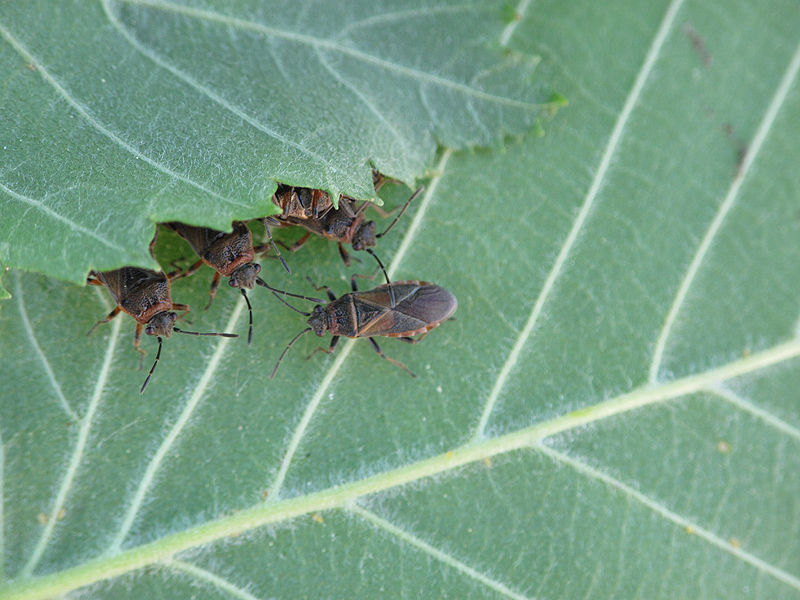The elm seed bug has been recognized as Utah’s newest pest. It was first discovered in Utah in July 2014 and confirmed by the Utah State University Extension Utah Plant Pest Diagnostic Lab and the U.S. Department of Agriculture Animal and Plant Health Inspection Service. The elm seed bug has now been widely reported along the Wasatch Front, Cache County, east to Duchesne County, west to Tooele County and south to Grand County.
“We have received an abundance of calls about this pest over the last few weeks,” said Ryan Davis, USU Extension arthropod diagnostician. “People want to know what this pest is and how to keep it from coming into their homes.”
Davis said adult elm seed bugs are about an one-third inch long with dark, rusty-red and black coloring. They feed primarily on elm seeds and leaves. Similar to the boxelder bug, elm seed bugs enter homes and buildings in large numbers. However, unlike boxelder bugs, whose peak nuisance time is in the fall and spring, the peak nuisance time of elm seed bugs is during the hottest days of summer, about mid-June through Aug.
“Be aware that elm seed bugs can emit a pungent odor from scent glands, similar to bitter almonds, and they will leave unsightly fecal spots behind,” he said. “When many of them are gathered indoors, they will even land and crawl on people, but they are not considered a health threat.”
Davis said elm seed bugs enter structures through cracks and crevices, but most commonly through windows and doors. Any gap in weather stripping in a window or door is an open invitation. New windows, and even picture windows, are susceptible to elm seed bug entry.
Tips for keeping the pests outside include caulking foundation cracks and gaps in soffits and around plumbing, gas or electrical conduits; sealing windows and doors with sealant or weather stripping; and making sure all screens fit tightly. In addition, vacuuming the bugs is effective. Be sure to dispose of or freeze the vacuum bags before reuse. If using a vacuum with a hose extension, insert a knee-high nylon stocking into the hose end and secure the open end around the hose end with a rubber band. Vacuum elm seed bugs, then remove the stocking with the bugs, tie it shut and throw it away. Keep in mind that this method may cause elm seed bugs to emit their foul-smelling odor. For larger-scale exterior vacuuming, fill a wet-dry vac with approximately 1 inch of water and a dash of dish soap to drown the bugs.
Davis said residual pyrethroid insecticides can help reduce elm seed bug entry when applied around the foundation, windows, doors and to the undersides of eaves, but complete control will be difficult. Products commonly labeled for these application sites contain active ingredients such as beta-cyfluthrin, bifenthrin, deltamethrin, cyfluthrin, cypermethrin, lambda-cyhalothrin and permethrin. Be sure the intended target site is listed on the product label.
“It will be interesting to see how the elm seed bug saga plays out in Utah,” Davis said. “Hopefully its presence as a nuisance pest will moderate, but only time will tell. Until then, Utahns now have to deal with boxelder bugs in the spring and fall, and elm seed bugs during the summer. Compared to boxelder bugs, however, elm seed bugs are smaller, more difficult to keep out of homes and structures and they emit a foul-smelling odor from their scent glands. If these pests have been a problem in your home, it is worth the effort to try and exclude them for the long-term.”
There’s a new pest in town

Pest
